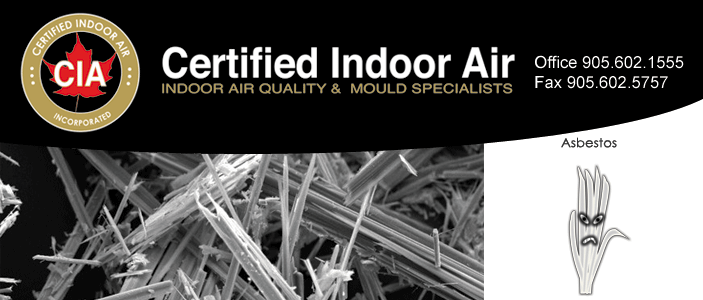You can't tell whether a material contains asbestos simply by looking at it, unless it is labeled. If in doubt, treat the material as if it contains asbestos or have it sampled and analyzed by a qualified professional. A professional should take samples for analysis, since a professional knows what to look for, and because there may be an increased health risk if fibres are released. In fact, if done incorrectly, sampling can be more hazardous than leaving the material alone. Taking samples yourself is not recommended. If you nevertheless choose to take the samples yourself, take care not to release asbestos fibres into the air or onto yourself. Material that is in good condition and will not be disturbed (by remodeling, for example) should be left alone. Only material that is damaged or will be disturbed should be sampled. Anyone who samples asbestos-containing materials should have as much information as possible on the handling of asbestos before sampling, and at a minimum, should observe the following procedures:
- Make sure no one else is in the room when sampling is done.
- Wear disposable gloves or wash hands after sampling.
- Shut down any heating or cooling systems to minimize the spread of any released fibres.
- Do not disturb the material any more than is needed to take a small sample.
- Place a plastic sheet on the floor below the area to be sampled.
- Wet the material using a fine mist of water containing a few drops of detergent before taking the sample. The water/detergent mist will reduce the release of asbestos fibres.
- Carefully cut a piece from the entire depth of the materials using, for example, a small knife, corer, or other sharp object. Place the small piece into a clean container (for example, a 35 mm film canister, small glass or plastic vial, or high quality resealable plastic bag).
- Tightly seal the container after the sample is in it.
- Carefully dispose of the plastic sheet. Use a damp paper towel to clean up any material on the outside of the container or around the area sampled. Dispose of asbestos materials according to state and local procedures.
- Label the container with an identification number and clearly state when and where the sample was taken.
- Patch the sampled area with the smallest possible piece of duct tape to prevent fibre release.
- Send the sample to an EPA-approved laboratory for analysis. The National Institute for Standards and Technology (NIST) has a list of these laboratories. You can get this list from the Laboratory Accreditation Administration, NIST, Gaithersburg, MD 20899 (telephone 301-975-4016). Your state or local health department may also be able to help.4
"I look like white fibers " |
|
Asbestos |
4 http://www.asbestos-institute.ca/home/home_ala.html#3
|

